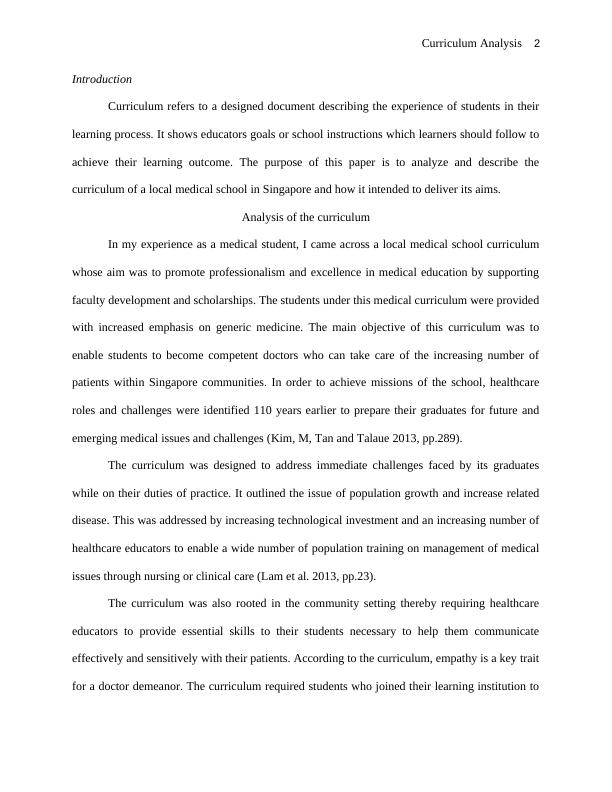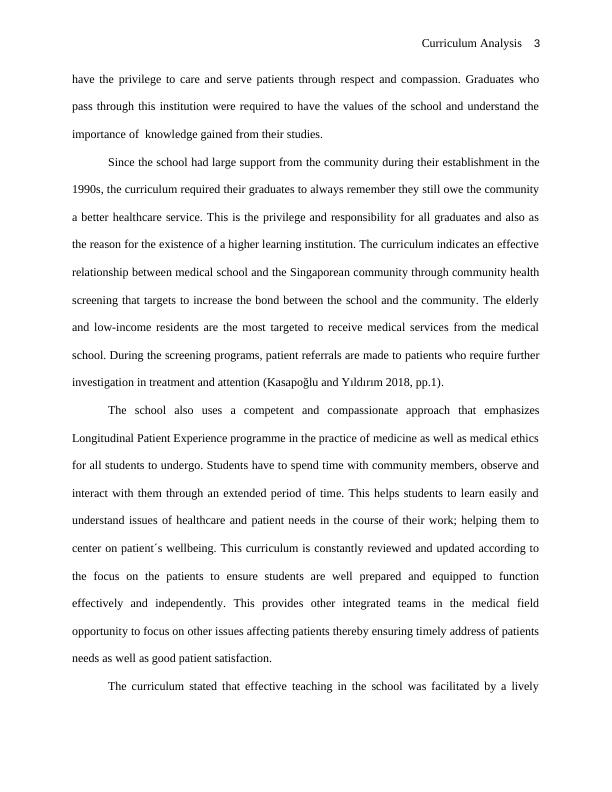Curriculum Analysis for a Local Medical School in Singapore
8 Pages2095 Words328 Views
Added on 2023-06-03
About This Document
This paper analyzes and describes the curriculum of a local medical school in Singapore and how it intends to deliver its aims. It outlines the issues of population growth and increase related disease and how they are addressed by the curriculum.
Curriculum Analysis for a Local Medical School in Singapore
Added on 2023-06-03
ShareRelated Documents
End of preview
Want to access all the pages? Upload your documents or become a member.
Enhancing the Learning of Future Postgraduate Nursing Students
|4
|882
|253
Leadership in Health Professional Education Assignment
|17
|4827
|27
Developing Value in Healthcare
|11
|2920
|20
Film Response
|5
|1070
|257
Family Medicine Training: Objectives, Goals, and Learning Outcomes in Undergraduate Medical Education
|8
|2931
|185
Understanding Curriculum: Elements and Importance
|14
|4237
|148



